Mercedes-Benz is a well-known brand in the automotive world, renowned for producing luxury cars and SUVs. However, the German automaker made a bold move into the pickup truck market by introducing the Mercedes-Benz X-Class.
The X-Class was a luxury pickup truck that Mercedes-Benz produced between 2017 and 2020. As such, the X-Class’s brief production run made it a rare commodity and one of the most expensive pickup trucks in the Nigerian used car market.
let’s dive into the details of the Mercedes-Benz X-Class, including its development, promotion, different models, current market price, and everything else you need to know about the rare and elusive Mercedes pickup.
Related Reading: This 1992 Lamborghini LM002 Is For Sale (We Bet You Didn't Know Lamborghini Built A Pickup Truck)
Brief Overview of the Mercedes-Benz X-Class
The Mercedes-Benz X-Class was a luxury pickup truck produced between 2017 and 2020. The X-Class got designed to offer the luxury and refinement that Mercedes-Benz is known for while also providing the practicality and versatility of a pickup truck.
The X-Class was available in both rear-wheel and all-wheel-drive configurations powered by a range of four-cylinder and six-cylinder engines. The X-Class also featured a range of advanced safety features, making it a practical and versatile pickup truck that was perfect for both work and play.
Development Of The Mercedes-Benz X-Class
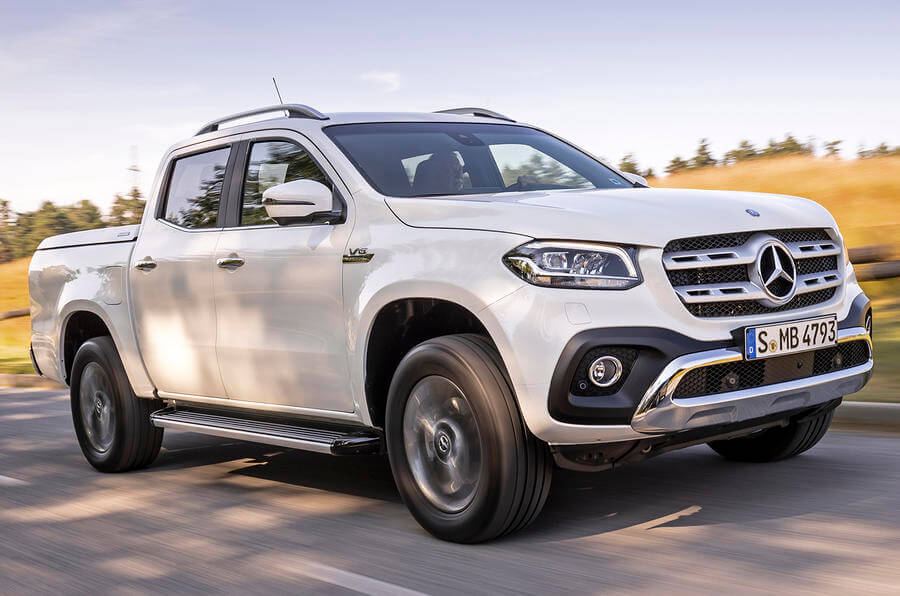
The X-Class’s development began in 2015 before it got officially unveiled in 2017. The X-Class was built on the same platform as the Nissan Navara and the Renault Alaskan, as Mercedes-Benz partnered with the two companies to develop the truck.
The three-pointed star designed the X-Class to offer the luxury and refinement that Mercedes-Benz is known for while also providing the practicality and versatility of a pickup truck.
The X-Class was available in both rear-wheel and all-wheel-drive configurations, with its power coming from several four-cylinder and six-cylinder engines. The four-cylinder engines were available in both diesel and gasoline variants, while the six-cylinder engine was only available in diesel.
The X-Class also featured a range of advanced safety features, including lane departure warning, traffic sign recognition, and a 360-degree camera system.
The Mercedes-Benz X-Class’s Promotion
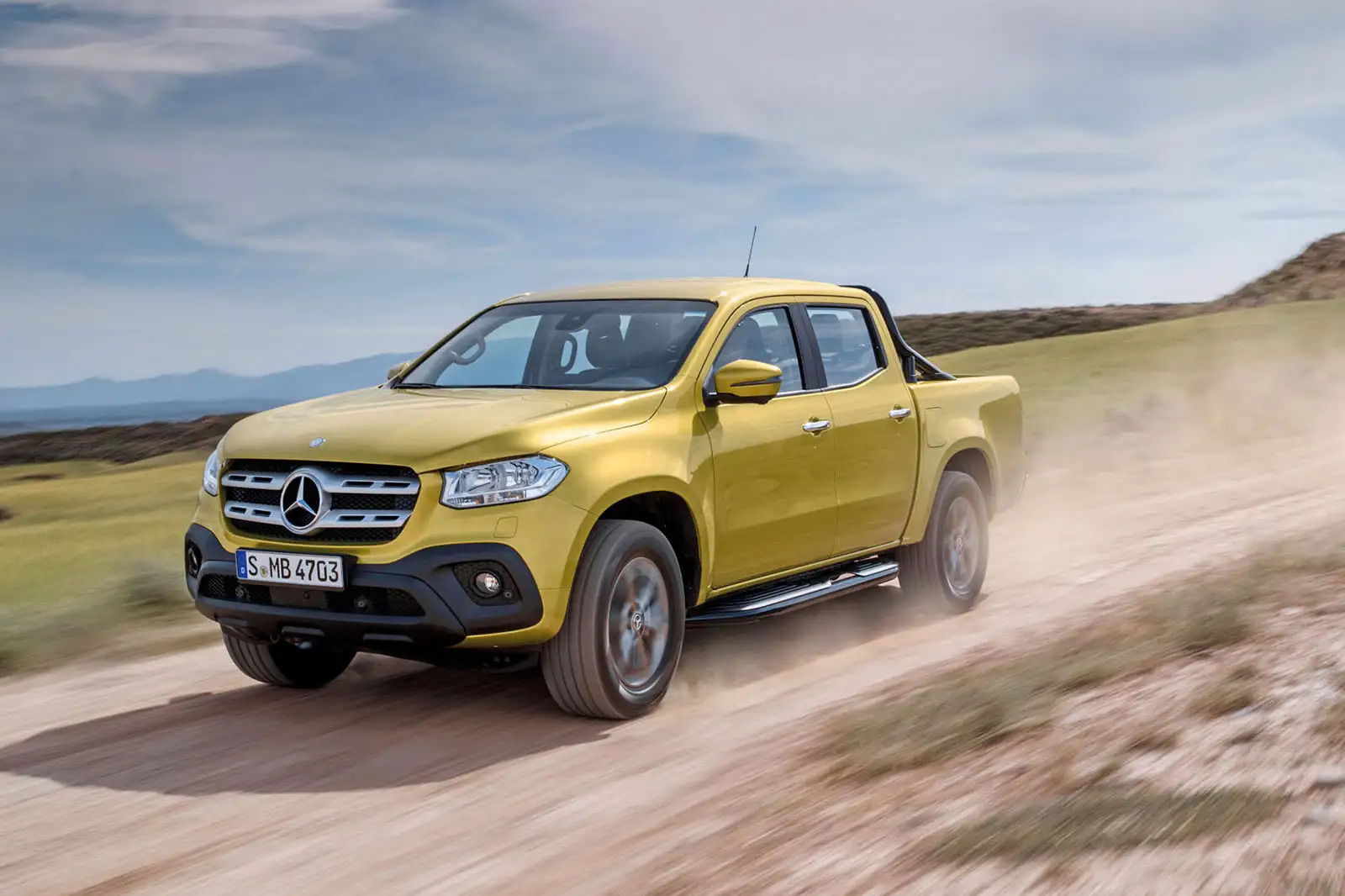
Although many people had no idea a pickup truck with the three-pointed star's logo exists, while many who do know have never seen one in person, Mercedes-Benz went to great lengths to promote the X-Class, as the company understandably believed the vehicle would appeal to a wide range of customers.
The X-Class was marketed as a luxury pickup truck perfect for both work and play. The ad was everywhere, including television commercials, print advertisements, and online campaigns.
Mercedes-Benz also used the X-Class to sponsor a range of events, including music festivals, sports competitions, and outdoor activities.
You can’t fault a company for believing such rigorous promotion would announce the groundbreaking Mercedes pickup to a wider audience and generate interest in the vehicle. As a matter of fact, it did.
The Mercedes-Benz X-Class Models

The X-Class was available in different model ranges, each designed to appeal to a different type of customer. The standard X-Class was available in three distinct trims: Pure, Progressive, and Power.
The Pure trim level was the most basic model, while the Power trim was the most luxurious. The Progressive trim offered a balance between the two.
In addition to the standard X-Class, Mercedes-Benz also introduced a range of special edition models. These models included the X-Class ELEMENT, which featured a range of exterior and interior upgrades, and the X-Class Edition 1, which featured a more aggressive exterior design and a range of advanced features.
Let’s take a closer look at their powertrains and performance figures.
Mercedes-Benz X-Class Petrol Engine X200 Model
The petrol engine X200 model was one of the four-cylinder engine options for the X-Class. The X200's power came from a 2.0-liter turbocharged gasoline engine that produced 165 horsepower and 185 lb-ft of torque.
The X200 was available with either rear-wheel or all-wheel drive paired with a six-speed manual transmission or a seven-speed automatic transmission. The X200 had a top speed of 115 mph and could accelerate from 0 to 62 mph in 11.8 seconds.
Mercedes-Benz X-Class Diesel Engine X200d Model
The X200d was another four-cylinder engine option available for the X-Class. The X200d's power came from a 2.3-liter turbocharged diesel engine that produced 163 horsepower and 297 lb-ft of torque.
The X200d was available with either rear-wheel or all-wheel drive paired with a six-speed manual or seven-speed automatic transmission. The X200d had a top speed of 113 mph and could accelerate from 0 to 62 mph in 12.9 seconds.
Mercedes-Benz X-Class Diesel Engine X250d Model
The X250d was a more powerful four-cylinder engine option available for the X-Class. The X250d got power from a 2.3-liter twin-turbocharged diesel engine that produced 190 horsepower and 332 lb-ft of torque.
The X250d was available with either rear-wheel or all-wheel drive paired with a six-speed manual transmission or a seven-speed automatic gearbox. The X250d had a top speed of 123 mph and could accelerate from 0 to 62 mph in 9.5 seconds.
Mercedes-Benz X-Class Diesel Engine X350d Model
The X350d was the most powerful engine option available for the X-Class, with its motivation coming from a 3.0-liter turbocharged diesel engine producing 258 horsepower and 406 lb-ft of torque.
The X350d was only available with all-wheel drive and a seven-speed automatic transmission. The X350d had a top speed of 128 mph and could accelerate from 0 to 62 mph in 7.9 seconds.
The Mercedes-Benz X-Class Exterior Design:
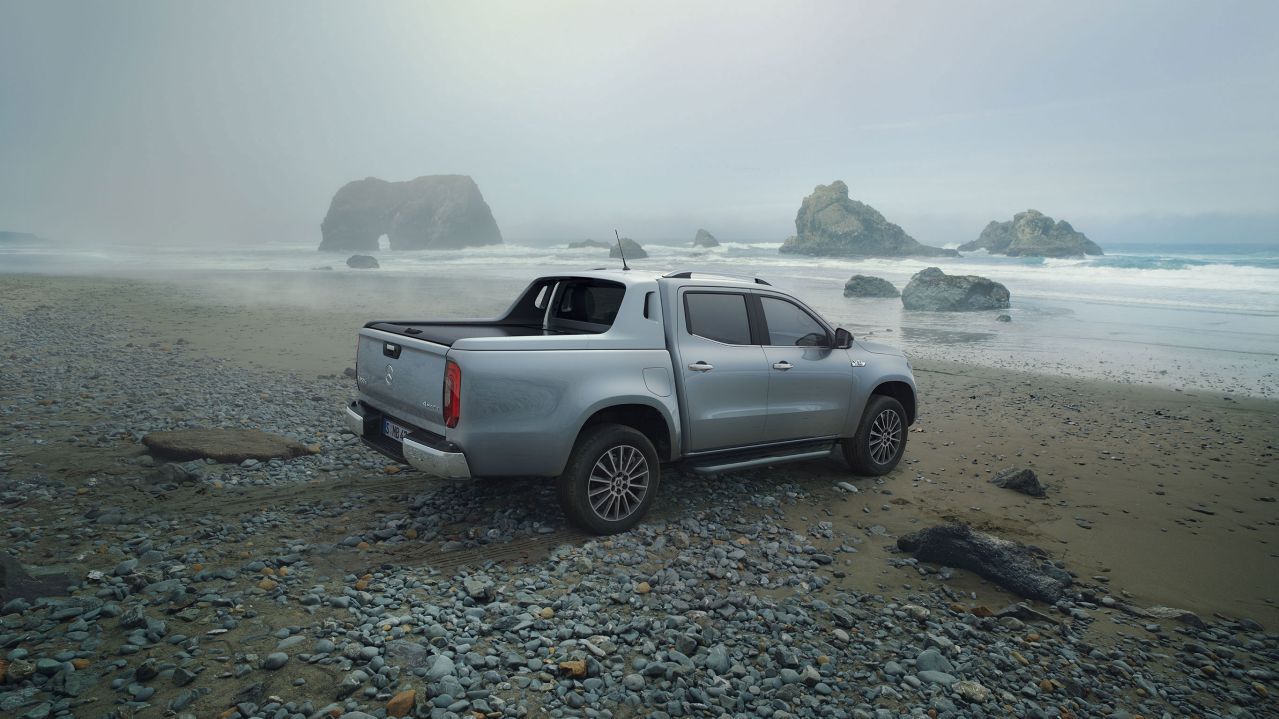
The Mercedes-Benz X-Class had a bold and distinctive exterior design marked by a muscular front fascia. The truck featured a prominent front grille with the iconic Mercedes-Benz emblem flanked by angular LED headlights and a sculpted hood.
The X-Class was available in several colors as well as exterior upgrades that included alloy wheels, roof rails, and a range of bed liners and covers.
The Mercedes-Benz X-Class Interior Design:

The X-Class’s interior was luxurious and practical, exemplified by a spacious and comfortable cabin with plenty of headroom and legroom for both the driver and passengers.
The interior wore a range of premium materials and upholstery options, such as leather and suede. The convenience features included power-adjustable seats, a panoramic sunroof, and a premium sound system.
Related Reading: Meet The Small But Mighty 500-Horsepower Telo Truck MT1, A New Electric Pickup By a US Startup Company
The Mercedes-Benz X-Class Infotainment System:
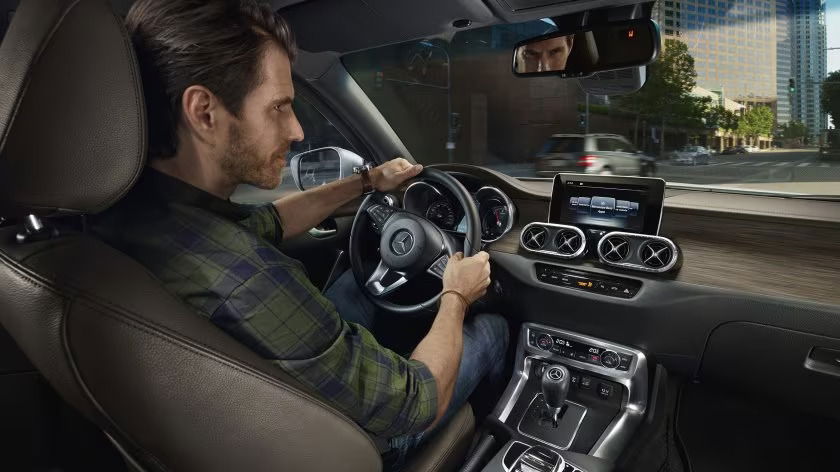
The X-Class featured a range of advanced infotainment features, including a touchscreen display, a premium sound system, and a range of connectivity options.
It was compatible with both Apple CarPlay and Android Auto and featured a range of advanced safety features, including lane departure warning, traffic sign recognition, and a 360-degree camera system.
The Mercedes-Benz X-Class Drivetrain and Suspension System:

The X-Class was available with either rear-wheel or all-wheel drive, depending on the model. It used advanced suspension technologies, including a multi-link rear suspension and a coil-spring front suspension, which helped provide a smooth and comfortable ride.
The X-Class also had several advanced safety features, including adaptive cruise control, blind spot monitoring, and automatic emergency braking.
5 Reasons The Mercedes-Benz X-Class Failed
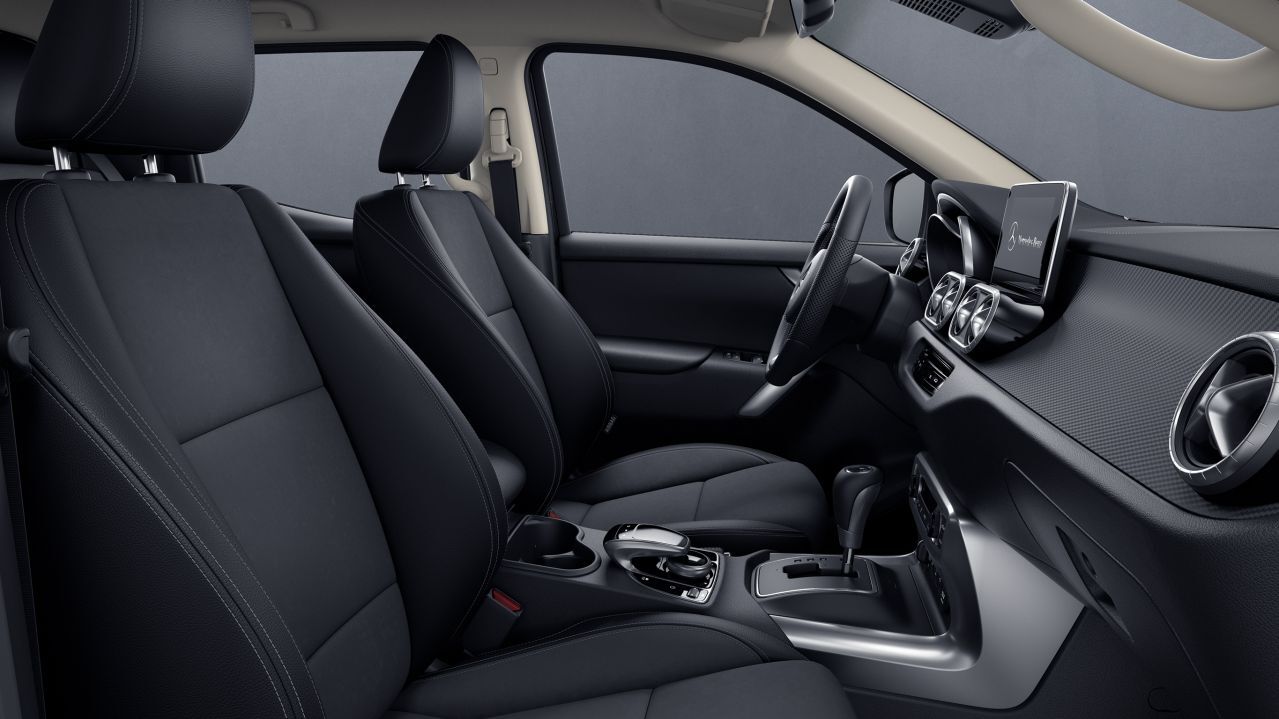
Despite the promising concept of a luxury pickup truck wearing the Mercedes-Benz logo, the X-Class had a rather disappointing outing, resulting in the German automaker pulling the nameplate from the production line barely three years later.
So, what's responsible for the X-Class's market failure?
1. High Price: It opened with around $43,000 (around $53,000 in today's money), and you haven't even begun adding options that could set you back a small fortune.
Thus, the X-Class was priced higher than its competitors, which made it less attractive to buyers looking for a more affordable pickup truck.
2. Limited Availability: The X-Class was only available in a few markets, mainly Europe, Australia, and South Africa. In fact, the truck made its global debut in South Africa.
This limited availability made it difficult for the X-Class to gain traction in other markets, including North America.
3. Lack Of Unique Features: Despite its higher price point, the X-Class lacked unique features to set it apart from its competitors. It was essentially a rebadged version of the Nissan Navara pickup truck, a deal-breaker for buyers looking for a unique Mercedes-ey pickup truck.
In fact, this is considered the biggest reason why the X-Class project failed. Riding on the Nissan Navara architecture meant the X-Class failed in its perceived core value proposition as a Mercedes-Benz pickup. An influential figure in the automotive industry christened it as no more than “a Navara with mascara.”
4. Brand Perception: Why do you think the German automaker chose South Africa over North America as the site for the X-Class global reveal? Because Southies were more hyped by the idea of a Mercedes truck than the Americans.
Mercedes-Benz, known for producing high-end luxury vehicles, left some buyers unconvinced and unwilling to accept a Mercedes-Benz pickup truck as a serious work vehicle.
Had the company focused more on convincing the segment and less on laundering the three-pointed star’s influence, there’s a big chance the story would’ve been different today.
5. Timing: Many pundits are of the opinion that the X-Class came to the market at a time the pickup truck segment was already very competitive, with established players like Ford, Chevrolet, and Toyota dominating the market.
The sales numbers show this made it difficult for the X-Class to gain a meaningful foothold in the market. However, time has proven that the market dominance of behemoths like Ford and Toyota hasn’t stopped unique offerings like Rivian R1T and GMC’s Hummer electric pickup truck from gaining considerable market traction.
We believe the idea of a Mercedes pickup can still work wonders with the right combination of originality and unique features.
How Much Is The Mercedes-Benz X-Class Pickup Right Now?
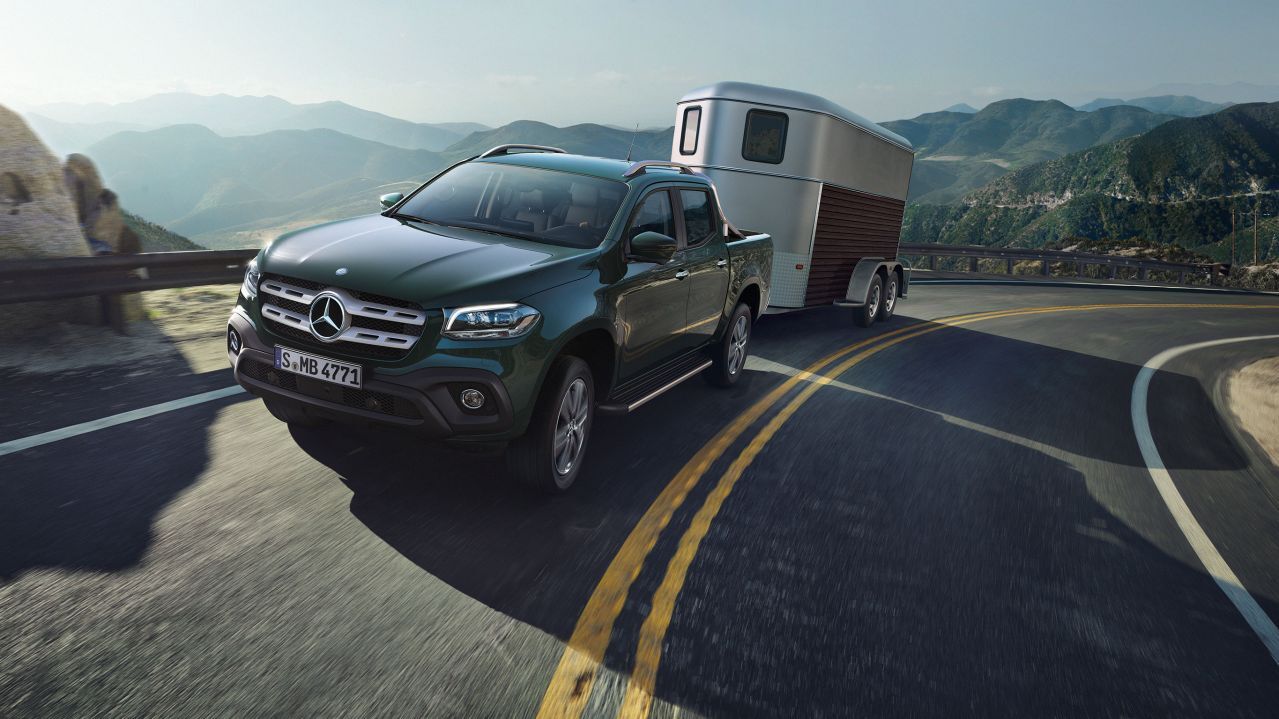
As it turns out, the X-Class’s rarity keeps driving up the price point in the used market. For example, only two are available on the Jiji online marketplace at press time, with their prices set at ₦79 million (around $105,000) and ₦58 million (around $77,200), respectively. The first is a black 2019 model, while the second is a white 2018 model; both are offered as 'foreign-used' in Abuja, Nigeria.
In other words, the X-Class is even more expensive than when it was new two to three years ago. The X-Class’s price in Nigeria reflects its price in used car markets around the world.
For example, there are several of them currently available for sale on the pan-European auto market AutoScout24, with their prices ranging from €35,000 (₦29.340 million) and averaging €40,000 (₦33.520 million). So much for a supposedly failed pickup that opened with $43,000.
Final Word On The X-Class Project

The Mercedes-Benz X-Class was a bold move by the German automaker as it ventured into a market it had never explored. While the X-Class only got produced for a few years, it left a mark with its reinterpretation of the luxury and refinement Mercedes-Benz is known for.
The X-Class offered a range of advanced features and safety technologies befitting a practical and versatile pickup truck for both work and play. Unfortunately, those features were neither generous nor unique enough to justify the considerably higher price tag.
While the X-Class may no longer be in production, the astonishingly high market value proves it will always get remembered as a unique and innovative vehicle that, at least, tried to move the boundaries of what a pickup truck could be.